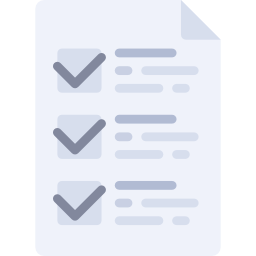ADHD Treatment
ADHD, or Attention-Deficit/Hyperactivity Disorder, is a neurodevelopmental disorder characterized by persistent patterns of inattention, hyperactivity, and/or impulsivity that interfere with daily functioning. Effective ADHD treatment often involves a multi-faceted approach, tailored to the individual’s specific needs and symptoms.
Pharmacological Interventions:
Stimulant medications are typically the first-line treatment for ADHD. These medications, such as methylphenidate (Ritalin, Concerta) and amphetamine (Adderall, Vyvanse), work by increasing the levels of neurotransmitters like dopamine and norepinephrine in the brain, improving focus, attention, and impulse control. Non-stimulant medications, such as atomoxetine (Strattera), guanfacine (Intuniv), and clonidine (Kapvay), offer alternative options for individuals who cannot tolerate or do not respond well to stimulants. These medications work through different mechanisms to regulate brain activity.
Medication management requires careful monitoring by a healthcare professional. Dosage adjustments and assessments of side effects are crucial for optimizing treatment outcomes. Common side effects of stimulant medications can include decreased appetite, sleep disturbances, and headaches. Non-stimulants may have side effects such as fatigue, dizziness, or changes in blood pressure.
Time to feel better. Find a mental, physical health expert that works for you.
Behavioral Therapies:
Behavioral therapies play a vital role in ADHD management. Cognitive Behavioral Therapy (CBT) helps individuals develop coping strategies for managing impulsivity, improving organizational skills, and reducing negative thought patterns. Parent training programs equip parents with effective strategies for managing their child’s behavior at home. These programs often focus on establishing consistent routines, implementing positive reinforcement techniques, and improving communication.
Educational interventions are also essential for children with ADHD. These may include individualized education programs (IEPs) or 504 plans that provide accommodations and support in the school setting. Teachers can implement classroom strategies such as providing clear instructions, breaking down tasks into smaller steps, and offering frequent feedback.
Lifestyle Modifications:
Lifestyle changes can significantly impact ADHD symptoms. Regular exercise has been shown to improve attention and reduce hyperactivity. A balanced diet, adequate sleep, and stress management techniques are also crucial for overall well-being and symptom management. Mindfulness and meditation practices can help individuals develop greater self-awareness and improve focus.
Complementary and Alternative Treatments:
Some individuals explore complementary and alternative treatments, such as neurofeedback, dietary supplements, and herbal remedies. However, the scientific evidence supporting the effectiveness of these treatments is often limited. It is essential to discuss any complementary or alternative treatments with a healthcare professional before incorporating them into an ADHD management plan.
Importance of Multimodal Approach:
The most effective ADHD treatment often involves a combination of medication, behavioral therapies, and lifestyle modifications. Regular follow-up with a healthcare professional is essential for monitoring progress, adjusting treatment plans as needed, and addressing any emerging concerns. Individualized care is paramount, as the optimal treatment approach varies depending on the individual’s age, symptoms, and co-occurring conditions.
What should I do if I think my child has ADHD?
Observe and Document:
- Detailed Notes:
- Begin by keeping a detailed record of your child’s behaviors. Note when and where these behaviors occur, how often, and how they impact your child’s daily life. Pay attention to patterns.
- Specifically look for symptoms of inattention (difficulty focusing, easily distracted), hyperactivity (fidgeting, excessive talking), and impulsivity (interrupting, acting without thinking).
- Multiple Settings:
- Remember that ADHD symptoms should be present in multiple settings, such as at home and at school. Gather input from teachers, caregivers, or other adults who interact with your child.
- Consult Professionals:
- Start with Your Pediatrician:
- Your child’s pediatrician is a good starting point. They can perform an initial assessment, rule out other potential medical conditions, and provide referrals to specialists.
- Seek Specialized Evaluation:
- A comprehensive ADHD evaluation should be conducted by a qualified professional, such as a child psychologist, psychiatrist, or developmental pediatrician. These professionals can administer standardized tests and conduct thorough interviews.
- School Resources:
- Talk to your childs school. They can give input on your childs behavior in an educational setting. Also they can provide information on any school resources that may be available.
- Gather Information:
- Educate Yourself:
- Learn as much as you can about ADHD from reputable sources, such as the Centers for Disease Control and Prevention (CDC) and the American Academy of Pediatrics (AAP).
- Support Organizations:
- Organizations like CHADD (Children and Adults with Attention-Deficit/Hyperactivity Disorder) offer valuable resources, support, and information for families affected by ADHD.
- Advocate for Your Child:
- Open Communication:
- Maintain open communication with your child’s healthcare providers and educators. Share your observations and concerns, and actively participate in developing a plan.
- Individualized Support:
- If your child receives an ADHD diagnosis, work with their school to develop an individualized education program (IEP) or a 504 plan to provide appropriate accommodations and support.
- Early Intervention:
- Importance of Early Diagnosis:
- Early diagnosis and intervention can significantly improve outcomes for children with ADHD. It can help them develop coping strategies, build self-esteem, and succeed in school and in life.
- Treatment Options:
- Treatment for ADHD may include a combination of medication, behavioral therapy, and lifestyle modifications.
It is important to remember that every child is different, and the process of diagnosis and treatment can vary. Be patient, persistent, and advocate for your child’s needs.
What is ADHD?
Attention-Deficit/Hyperactivity Disorder (ADHD) is a neurodevelopmental disorder that affects millions of children and adults worldwide. It’s characterized by persistent patterns of inattention, hyperactivity, and/or impulsivity that interfere with daily functioning and development. While often diagnosed in childhood, ADHD can persist into adulthood, impacting various aspects of life, including academic performance, work, and relationships.
Core Symptoms:
- Inattention: Individuals with inattentive ADHD struggle to maintain focus, especially on tasks that are not inherently interesting. They may have difficulty organizing tasks, following instructions, and completing assignments. They are easily distracted, forgetful, and often lose things.
- Hyperactivity: Hyperactivity manifests as excessive fidgeting, restlessness, and difficulty staying seated. Children with hyperactive ADHD often talk excessively and have trouble engaging in quiet activities. Adults may experience internal restlessness or difficulty relaxing.
- Impulsivity: Impulsivity involves acting without thinking. Individuals may interrupt others, have trouble waiting their turn, and make hasty decisions without considering the consequences. This can lead to difficulties in social interactions and decision-making.
Types of ADHD:
ADHD is classified into three main types:
- Predominantly Inattentive Presentation: This type is characterized by significant inattention symptoms without prominent hyperactivity or impulsivity.
- Predominantly Hyperactive-Impulsive Presentation: This type is characterized by significant hyperactivity and impulsivity symptoms without significant inattention.
- Combined Presentation: This is the most common type, where individuals experience significant symptoms of both inattention and hyperactivity-impulsivity.
Causes and Risk Factors:
The exact causes of ADHD are not fully understood, but research suggests a combination of genetic and environmental factors.
- Genetics: ADHD often runs in families, indicating a strong genetic component.
- Brain Structure and Function: Studies have shown differences in brain structure and function in individuals with ADHD, particularly in areas responsible for attention, executive function, and motor control.
- Environmental Factors: Exposure to certain environmental toxins, such as lead, during pregnancy or early childhood, may increase the risk of ADHD. Premature birth and low birth weight are also considered risk factors.
Diagnosis and Impact:
Diagnosing ADHD requires a comprehensive evaluation by a qualified healthcare professional, such as a psychologist, psychiatrist, or developmental pediatrician. This evaluation includes assessing symptoms, gathering information from multiple sources (parents, teachers), and ruling out other potential conditions.
Untreated ADHD can have significant consequences, including:
- Academic difficulties
- Low self-esteem
- Relationship problems
- Increased risk of substance abuse
- Difficulty maintaining employment
Early diagnosis and intervention are crucial for improving outcomes and helping individuals with ADHD reach their full potential.
What are the Symptoms of ADHD?
Attention-Deficit/Hyperactivity Disorder (ADHD) presents a range of symptoms that can vary in intensity and manifestation across individuals and age groups. These symptoms fall into three main categories: inattention, hyperactivity, and impulsivity. Recognizing these symptoms is crucial for early diagnosis and intervention.
Inattention Symptoms:
Inattention symptoms can make it challenging to focus, organize, and complete tasks. Individuals with inattentive ADHD often exhibit the following:
- Difficulty Sustaining Attention: They struggle to maintain focus during tasks or play, especially those that are not inherently interesting.
- Easily Distracted: They are easily sidetracked by external stimuli, making it hard to stay on track.
- Forgetfulness: They frequently forget appointments, daily tasks, or instructions.
- Difficulty Organizing: They struggle with organization, time management, and prioritizing tasks.
- Avoidance of Sustained Mental Effort: They may avoid tasks that require prolonged mental effort, such as schoolwork or paperwork.
- Losing Things: They often misplace items necessary for tasks or activities.
- Failure to Follow Through: They may start tasks but struggle to complete them.
- Difficulty Following Instructions: They may struggle to understand and follow detailed instructions.
- Appearing Not to Listen: They may seem as if they are not listening even when directly spoken to.
Hyperactivity Symptoms:
Hyperactivity symptoms manifest as excessive movement and restlessness. These symptoms may include:
- Fidgeting and Squirming: They often fidget, tap their hands or feet, or squirm in their seat.
- Difficulty Staying Seated: They may have trouble remaining seated, especially in situations where it is expected.
- Excessive Talking: They may talk excessively, even in inappropriate situations.
- Running or Climbing Inappropriately: Children may run or climb in situations where it is not appropriate. Adults may feel restless.
- Difficulty Playing Quietly: They struggle to engage in quiet activities.
- Being “On the Go”: They often feel driven to be constantly moving or active.
Impulsivity Symptoms:
Impulsivity involves acting without thinking, which can lead to difficulties in social interactions and decision-making. These symptoms include:
- Interrupting Others: They may interrupt conversations or activities.
- Difficulty Waiting Their Turn: They struggle to wait their turn in line or during activities.
- Blurting Out Answers: They may blurt out answers before questions have been completed.
- Acting Without Thinking: They may make impulsive decisions without considering the consequences.
- Intruding on Others: They may intrude on or interrupt others’ activities.
Variations and Considerations:
It’s important to note that ADHD symptoms can vary across individuals and change with age. Children may exhibit more overt hyperactivity, while adults may experience more internal restlessness and difficulty managing daily responsibilities. Furthermore, the severity of symptoms can range from mild to severe, impacting individuals’ lives in different ways. A professional evaluation is crucial for an accurate diagnosis and appropriate treatment.
What Causes ADHD?
Attention-Deficit/Hyperactivity Disorder (ADHD) is a neurodevelopmental disorder that affects millions of children and adults worldwide. It’s characterized by persistent patterns of inattention, hyperactivity, and/or impulsivity that interfere with daily functioning and development. While often diagnosed in childhood, ADHD can persist into adulthood, impacting various aspects of life, including academic performance, work, and relationships.
Core Symptoms:
- Inattention: Individuals with inattentive ADHD struggle to maintain focus, especially on tasks that are not inherently interesting. They may have difficulty organizing tasks, following instructions, and completing assignments. They are easily distracted, forgetful, and often lose things.
- Hyperactivity: Hyperactivity manifests as excessive fidgeting, restlessness, and difficulty staying seated. Children with hyperactive ADHD often talk excessively and have trouble engaging in quiet activities. Adults may experience internal restlessness or difficulty relaxing.
- Impulsivity: Impulsivity involves acting without thinking. Individuals may interrupt others, have trouble waiting their turn, and make hasty decisions without considering the consequences. This can lead to difficulties in social interactions and decision-making.
Types of ADHD:
ADHD is classified into three main types:
- Predominantly Inattentive Presentation: This type is characterized by significant inattention symptoms without prominent hyperactivity or impulsivity.
- Predominantly Hyperactive-Impulsive Presentation: This type is characterized by significant hyperactivity and impulsivity symptoms without significant inattention.
- Combined Presentation: This is the most common type, where individuals experience significant symptoms of both inattention and hyperactivity-impulsivity.
Causes and Risk Factors:
The exact causes of ADHD are not fully understood, but research suggests a combination of genetic and environmental factors.
- Genetics: ADHD often runs in families, indicating a strong genetic component.
- Brain Structure and Function: Studies have shown differences in brain structure and function in individuals with ADHD, particularly in areas responsible for attention, executive function, and motor control.
- Environmental Factors: Exposure to certain environmental toxins, such as lead, during pregnancy or early childhood, may increase the risk of ADHD. Premature birth and low birth weight are also considered risk factors.
Diagnosis and Impact:
Diagnosing ADHD requires a comprehensive evaluation by a qualified healthcare professional, such as a psychologist, psychiatrist, or developmental pediatrician. This evaluation includes assessing symptoms, gathering information from multiple sources (parents, teachers), and ruling out other potential conditions.
Untreated ADHD can have significant consequences, including:
- Academic difficulties
- Low self-esteem
- Relationship problems
- Increased risk of substance abuse
- Difficulty maintaining employment
Early diagnosis and intervention are crucial for improving outcomes and helping individuals with ADHD reach their full potential.
How is ADHD Diagnosed?
Attention-Deficit/Hyperactivity Disorder (ADHD) presents a range of symptoms that can vary in intensity and manifestation across individuals and age groups. These symptoms fall into three main categories: inattention, hyperactivity, and impulsivity. Recognizing these symptoms is crucial for early diagnosis and intervention.
Inattention Symptoms:
Inattention symptoms can make it challenging to focus, organize, and complete tasks. Individuals with inattentive ADHD often exhibit the following:
- Difficulty Sustaining Attention: They struggle to maintain focus during tasks or play, especially those that are not inherently interesting.
- Easily Distracted: They are easily sidetracked by external stimuli, making it hard to stay on track.
- Forgetfulness: They frequently forget appointments, daily tasks, or instructions.
- Difficulty Organizing: They struggle with organization, time management, and prioritizing tasks.
- Avoidance of Sustained Mental Effort: They may avoid tasks that require prolonged mental effort, such as schoolwork or paperwork.
- Losing Things: They often misplace items necessary for tasks or activities.
- Failure to Follow Through: They may start tasks but struggle to complete them.
- Difficulty Following Instructions: They may struggle to understand and follow detailed instructions.
- Appearing Not to Listen: They may seem as if they are not listening even when directly spoken to.
Hyperactivity Symptoms:
Hyperactivity symptoms manifest as excessive movement and restlessness. These symptoms may include:
- Fidgeting and Squirming: They often fidget, tap their hands or feet, or squirm in their seat.
- Difficulty Staying Seated: They may have trouble remaining seated, especially in situations where it is expected.
- Excessive Talking: They may talk excessively, even in inappropriate situations.
- Running or Climbing Inappropriately: Children may run or climb in situations where it is not appropriate. Adults may feel restless.
- Difficulty Playing Quietly: They struggle to engage in quiet activities.
- Being “On the Go”: They often feel driven to be constantly moving or active.
Impulsivity Symptoms:
Impulsivity involves acting without thinking, which can lead to difficulties in social interactions and decision-making. These symptoms include:
- Interrupting Others: They may interrupt conversations or activities.
- Difficulty Waiting Their Turn: They struggle to wait their turn in line or during activities.
- Blurting Out Answers: They may blurt out answers before questions have been completed.
- Acting Without Thinking: They may make impulsive decisions without considering the consequences.
- Intruding on Others: They may intrude on or interrupt others’ activities.
Variations and Considerations:
It’s important to note that ADHD symptoms can vary across individuals and change with age. Children may exhibit more overt hyperactivity, while adults may experience more internal restlessness and difficulty managing daily responsibilities. Furthermore, the severity of symptoms can range from mild to severe, impacting individuals’ lives in different ways. A professional evaluation is crucial for an accurate diagnosis and appropriate treatment.
What type of treatment is best for ADHD?
Determining the “best” treatment for ADHD is highly individualized, as the most effective approach varies depending on the person’s age, symptom severity, co-occurring conditions, and personal preferences. A multimodal approach, combining different treatment modalities, is often considered the gold standard.
- Medication Management:
- Stimulants:
- These are often the first-line medication treatment. They increase dopamine and norepinephrine levels in the brain, improving focus and attention.
- Examples include methylphenidate (Ritalin, Concerta) and amphetamine (Adderall, Vyvanse).
- Careful monitoring is crucial to manage potential side effects like decreased appetite or sleep disturbances.
- Non-Stimulants:
- These medications, like atomoxetine (Strattera), guanfacine (Intuniv), and clonidine (Kapvay), offer alternatives for those who don’t tolerate stimulants or have co-existing conditions.
- They work through different mechanisms to regulate brain activity.
Behavioral Therapies:
- Cognitive Behavioral Therapy (CBT):
- CBT helps individuals develop coping strategies for managing impulsivity, improving organizational skills, and reducing negative thought patterns.
- Parent Training:
- For children with ADHD, parent training equips parents with effective strategies for managing their child’s behavior at home, including consistent routines and positive reinforcement.
- Educational Interventions:
- Individualized Education Programs (IEPs) or 504 plans provide accommodations and support in the school setting, such as extra time for assignments or a quiet workspace.
- Lifestyle Modifications:
- Regular Exercise:
- Physical activity can improve attention and reduce hyperactivity.
- Balanced Diet:
- A healthy diet supports overall well-being and can positively impact ADHD symptoms.
- Adequate Sleep:
- Consistent sleep patterns are crucial for managing ADHD symptoms.
- Stress Management:
- Techniques like mindfulness and meditation can help individuals regulate their emotions and improve focus.
- Combined Treatment:
- Research consistently indicates that a combination of medication and behavioral therapies often yields the most significant and lasting benefits.
- Medication can help manage core symptoms, while behavioral therapies provide essential coping skills and strategies.
- This combined approach helps people to function better in daily life.
Individualized Treatment Plans:
- It is vital to collaborate with healthcare professionals to develop an individualized treatment plan tailored to specific needs.
- Regular monitoring and adjustments are essential to optimize treatment outcomes.
- Every person with ADHD is different, and so their treatment plan should be too.
Importance of Early Intervention:
- Early diagnosis and intervention can significantly improve outcomes for individuals with ADHD.
- It can help them develop essential skills, build self-esteem, and achieve their full potential.
Parent Training for ADHD Children
Parent training programs are a cornerstone of effective ADHD management for children. These programs equip parents with the skills and strategies needed to navigate the challenges of raising a child with ADHD, fostering positive behavior, and improving family dynamics. The core objective is to empower parents to create a structured and supportive environment that promotes their child’s success.
Key Components of Parent Training:
- Understanding ADHD:
- Programs begin by educating parents about the nature of ADHD, its symptoms, and its impact on children’s behavior and development. This knowledge helps parents understand their child’s challenges and respond with empathy and patience.
- Behavior Management Techniques:
- Parents learn practical strategies for managing challenging behaviors, such as impulsivity, hyperactivity, and inattention.
- This includes techniques like:
- Positive Reinforcement: Using rewards and praise to encourage desired behaviors.
- Consistent Discipline: Establishing clear rules and consequences, and following through consistently.
- Time-Out: Using time-out effectively to manage disruptive behavior.
- Token Economies: Implementing systems to reward positive behavior with tokens that can be exchanged for privileges.
- Improving Communication:
- Effective communication is crucial for building positive parent-child relationships. Parents learn how to communicate clearly, give concise instructions, and actively listen to their child’s needs.
- Establishing Routines and Structure:
- Children with ADHD thrive in structured environments. Parent training helps parents establish consistent routines for daily activities, such as homework, chores, and bedtime. This structure provides predictability and reduces anxiety.
- Problem-Solving Skills:
- Parents learn how to identify and address specific behavioral challenges. They develop problem-solving skills to collaboratively work with their child to find solutions.
- Stress Management:
- Raising a child with ADHD can be stressful. Parent training programs often include stress management techniques to help parents cope with the challenges and maintain their own well-being.
- Collaboration with School:
- Parents are encouraged to collaborate with their child’s teachers and school staff to ensure consistency in behavior management strategies across settings.
- Emotional Support:
- Many programs provide a support network, enabling parents to share experiences and build connections with other parents facing similar challenges.
Benefits of Parent Training:
- Reduced Behavioral Problems: Parent training can significantly reduce disruptive behaviors and improve children’s compliance.
- Improved Parent-Child Relationships: By learning effective communication and behavior management strategies, parents can build stronger and more positive relationships with their children.
- Increased Parental Confidence: Parent training empowers parents with the skills and knowledge they need to effectively manage their child’s ADHD.
- Enhanced Child’s Self-Esteem: When parents use positive reinforcement and create a supportive environment, children with ADHD develop greater self-esteem and confidence.
- Improved School Performance: Consistent behavior management strategies at home and school can improve children’s academic performance.
Parent training, when combined with other treatment modalities, such as medication and behavioral therapy, can significantly improve the lives of children with ADHD and their families.
Parenting Tools for Children with ADHD:
Parenting a child with ADHD requires patience, understanding, and a consistent approach. Utilizing effective parenting tools can make a significant difference in managing challenging behaviors and fostering a positive environment. These tools focus on creating structure, promoting positive reinforcement, and improving communication.
Creating Structure and Routine:
- Consistent Schedules:
- Children with ADHD thrive on predictability. Establishing consistent daily routines for meals, homework, and bedtime can minimize anxiety and improve behavior.
- Visual schedules, using pictures or checklists, can be particularly helpful for younger children.
- Clear and Concise Instructions:
- Break down tasks into smaller, manageable steps.
- Use clear, direct language and avoid lengthy explanations.
- Provide instructions one at a time, and ensure your child understands each step before moving on.
- Organized Environment:
- Minimize distractions in the home and create designated spaces for activities like homework and playtime.
- Use organizational tools, such as labeled bins and folders, to help your child keep their belongings organized.
Positive Reinforcement and Behavior Management:
- Positive Reinforcement:
- Focus on rewarding positive behaviors rather than solely punishing negative ones.
- Use praise, small rewards, or privileges to reinforce desired behaviors.
- Implement a token economy system, where children earn tokens for completing tasks or exhibiting good behavior, which can then be exchanged for rewards.
- Consistent Consequences:
- Establish clear rules and consequences for inappropriate behavior.
- Ensure consequences are immediate, consistent, and age-appropriate.
- Avoid lengthy lectures or emotional outbursts; instead, focus on delivering consequences calmly and consistently.
- Time-Out:
- Use time-out as a tool to help your child calm down and regain control.
- Ensure time-out is used consistently and in a designated, quiet space.
- Keep time-outs brief and focused on calming rather than punishment.
Improving Communication and Emotional Support:
- Active Listening:
- Practice active listening by making eye contact, nodding, and reflecting back what your child says.
- This helps your child feel heard and understood.
- Empathy and Understanding:
- Acknowledge your child’s struggles and provide emotional support.
- Help them understand that ADHD is a neurodevelopmental disorder, not a character flaw.
- Problem-Solving Together:
- Involve your child in problem-solving discussions to develop coping strategies.
- This empowers them to take ownership of their behavior and find solutions that work for them.
- Self-Care:
- Parenting a child with ADHD can be demanding. Prioritize self-care to manage stress and maintain your well-being.
- Seek support from other parents, support groups, or professionals.
By implementing these parenting tools, parents can create a supportive and structured environment that helps children with ADHD thrive. Remember that consistency, patience, and understanding are key to successful parenting.
Connect Free. Improve your mental and physical health with a professional near you

Can Adults Have ADHD?
Yes, adults absolutely can have ADHD. While it’s often diagnosed in childhood, ADHD doesn’t simply disappear with age. Many individuals carry their symptoms into adulthood, impacting their work, relationships, and overall quality of life. The understanding of adult ADHD has significantly improved in recent years, leading to increased awareness and diagnosis.
Persistence of Symptoms:
Adult ADHD symptoms may present differently than in children. Hyperactivity might manifest as restlessness or difficulty relaxing rather than overt physical movement. Inattention and impulsivity, however, often remain prominent. Adults with ADHD may struggle with:
- Organization and Time Management: Difficulty meeting deadlines, managing finances, and keeping track of appointments.
- Focus and Concentration: Trouble staying focused during meetings, reading, or completing tasks.
- Impulsivity: Making rash decisions, interrupting others, or engaging in risky behaviors.
- Emotional Regulation: Experiencing mood swings, irritability, or difficulty managing frustration.
- Relationship Challenges: Difficulty maintaining stable relationships due to impulsivity or inattention.
- Low Self-Esteem: A history of academic or professional struggles can lead to feelings of inadequacy.
Diagnosis in Adulthood:
Diagnosing adult ADHD requires a comprehensive evaluation by a qualified healthcare professional, such as a psychiatrist or psychologist. This evaluation typically includes:
- Detailed History: Gathering information about childhood and adult symptoms.
- Symptom Assessment: Using standardized rating scales and questionnaires to assess the presence and severity of symptoms.
- Ruling Out Other Conditions: Identifying other potential causes of symptoms, such as anxiety, depression, or sleep disorders.
- Collateral Information: Gathering input from family members or partners to gain a broader perspective.
Treatment Options for Adults:
Treatment for adult ADHD often involves a combination of:
- Medication: Stimulant and non-stimulant medications can help improve focus, attention, and impulse control.
- Therapy: Cognitive Behavioral Therapy (CBT) can help adults develop coping strategies for managing symptoms, improving organization, and regulating emotions.
- Lifestyle Changes: Regular exercise, a balanced diet, adequate sleep, and stress management techniques can significantly impact symptom management.
- Coaching: ADHD coaches can help adults develop practical strategies for improving time management, organization, and goal setting.
Importance of Recognition and Treatment:
Untreated adult ADHD can have significant consequences, including:
- Job Instability: Difficulty maintaining employment due to poor performance or impulsivity.
- Financial Problems: Impulsive spending or difficulty managing finances.
- Relationship Difficulties: Conflict due to impulsivity, inattention, or emotional dysregulation.
- Increased Risk of Mental Health Issues: Higher rates of anxiety, depression, and substance abuse.
Recognizing and treating adult ADHD can lead to significant improvements in quality of life. It can empower individuals to reach their full potential and build more fulfilling lives.
What Are Some Adult ADHD Symptoms?
Adult ADHD symptoms can significantly impact daily life, often presenting differently than in childhood. While hyperactivity might lessen, inattention and impulsivity persist, creating unique challenges. Recognizing these symptoms is crucial for seeking appropriate support and treatment.
Inattention in Adults:
Inattention in adults can manifest as difficulties with focus, organization, and task completion. Common symptoms include:
- Difficulty Focusing: Adults may struggle to maintain focus during meetings, conversations, or while reading. They might find their minds wandering easily.
- Poor Time Management: Chronic lateness, difficulty meeting deadlines, and struggling to prioritize tasks are common.
- Organization Challenges: Difficulty keeping track of appointments, managing paperwork, or maintaining a tidy workspace.
- Forgetfulness: Frequently forgetting appointments, commitments, or important details.
- Procrastination: Putting off tasks, especially those requiring sustained mental effort.
- Difficulty Following Through: Starting projects but struggling to complete them.
- Distractibility: Easily sidetracked by external stimuli or internal thoughts.
Impulsivity in Adults:
Impulsivity in adults can lead to rash decisions and difficulties in social interactions. Symptoms may include:
- Impulsive Spending: Making unplanned purchases or struggling to manage finances.
- Difficulty Waiting Their Turn: Interrupting others or struggling to wait in line.
- Emotional Impulsivity: Experiencing rapid mood swings or difficulty controlling anger.
- Risky Behaviors: Engaging in impulsive actions without considering the consequences, such as reckless driving or substance abuse.
- Relationship Difficulties: Interrupting conversations, blurting out inappropriate comments, or struggling to maintain stable relationships.
Hyperactivity/Restlessness in Adults:
While overt physical hyperactivity might decrease, adults with ADHD often experience internal restlessness. This can manifest as:
- Restlessness: Feeling constantly on edge or unable to relax.
- Difficulty Staying Still: Fidgeting, tapping feet, or shifting positions frequently.
- Excessive Talking: Talking excessively or interrupting others.
- Difficulty Engaging in Quiet Activities: Struggling to relax or engage in quiet hobbies.
- Internal Restlessness: Feeling mentally agitated or unable to quiet their thoughts.
Emotional Dysregulation:
Adults with ADHD may also experience emotional dysregulation, which involves:
- Mood Swings: Experiencing rapid and intense shifts in mood.
- Irritability: Becoming easily frustrated or angered.
- Low Frustration Tolerance: Struggling to cope with minor setbacks or frustrations.
- Difficulty Managing Stress: Feeling overwhelmed by daily stressors.
It’s important to remember that these symptoms can vary in severity and presentation. If you suspect you have adult ADHD, seeking a professional evaluation is crucial for accurate diagnosis and appropriate treatment.
Finding a Good Therapist For Me or My Child
Finding the right therapist is a crucial step towards mental and emotional well-being, whether it’s for yourself or your child. The therapeutic relationship is built on trust and comfort, so finding a good fit is paramount. Here’s a guide to help navigate this process:
- Define Your Needs:
- Identify Specific Issues:
- Are you seeking help for ADHD, anxiety, depression, trauma, or relationship issues?
- For children, consider if they need help with behavioral problems, social skills, or academic challenges.
- Determine Therapy Type:
- Do you prefer individual, family, or group therapy?
- Research different therapy approaches, such as Cognitive Behavioral Therapy (CBT), Dialectical Behavior Therapy (DBT), or play therapy for children.
- Consider Practicalities:
- Determine your budget, insurance coverage, and preferred location.
- Think about scheduling preferences and whether you need in-person or telehealth sessions.
- Seek Recommendations:
- Ask for Referrals:
- Talk to your primary care physician, pediatrician, or other healthcare professionals.
- Reach out to friends, family, or support groups for recommendations.
- Check with Insurance Providers:
- Your insurance company can provide a list of therapists in your network.
- Utilize Online Directories:
- Websites like Psychology Today and GoodTherapy offer therapist directories with filters for specialties and locations.
- Research and Screen Potential Therapists:
- Review Credentials and Experience:
- Ensure the therapist is licensed and has experience treating your specific concerns.
- Look for therapists with specialized training or certifications.
- Read Online Reviews:
- While not always definitive, reviews can provide insights into other clients’ experiences.
- Schedule Initial Consultations:
- Many therapists offer brief phone or in-person consultations to discuss your needs and their approach.
- Use this opportunity to ask questions about their experience, therapy style, and fees.
- Evaluate the Fit:
- Assess Comfort Level:
- Do you feel comfortable and safe sharing your thoughts and feelings with the therapist?
- For children, observe their interaction with the therapist and gauge their comfort level.
- Consider Communication Style:
- Does the therapist communicate clearly and effectively?
- Do you feel heard and understood?
- Evaluate Therapy Approach:
- Does the therapist’s approach align with your preferences and needs?
- Do you feel confident in their ability to help you achieve your goals?
- Trust Your Instincts:
- Pay Attention to Your Gut Feeling:
- Ultimately, the best therapist is one you feel comfortable with.
- Don’t hesitate to seek a different therapist if you don’t feel a strong connection.
- Be Patient:
- It may take time to find the right therapist.
- Don’t be discouraged if the first few sessions don’t feel perfect.
Finding a good therapist is an investment in your well-being. By carefully considering your needs and evaluating potential therapists, you can find a supportive and effective therapeutic relationship.

Free consultations. Connect free with local health professionals near you.
Conclusion
In navigating the complexities of ADHD, whether in children or adults, a critical understanding emerges: there is no singular, universally effective solution. The journey towards managing ADHD requires a personalized, multifaceted approach, acknowledging the unique nuances of each individual’s experience. From the structured guidance of parent training to the tailored interventions of cognitive behavioral therapy, and the carefully calibrated application of medication, the most successful strategies weave together various threads of support.
The importance of early intervention, particularly for children, cannot be overstated. Proactive engagement with healthcare professionals, coupled with the implementation of behavioral therapies and educational accommodations, sets the stage for improved outcomes and a greater sense of self-efficacy. For adults, recognizing and addressing ADHD symptoms is equally vital, as it can significantly enhance their quality of life, fostering healthier relationships and greater professional stability.
Moreover, the role of lifestyle modifications—regular exercise, a balanced diet, consistent sleep, and stress management—should not be underestimated. These foundational elements contribute to overall well-being and can amplify the effectiveness of other treatment modalities. The integration of these lifestyle adjustments into daily routines can create a supportive framework that empowers individuals to better manage their symptoms.
Finding a compatible therapist, whether for oneself or a child, is a crucial step in this process. The therapeutic relationship, built on trust and open communication, provides a safe space for exploration and growth. It is essential to prioritize comfort and rapport, ensuring that the chosen therapist aligns with individual needs and preferences.
Ultimately, the successful management of ADHD hinges on a collaborative effort. Individuals, families, healthcare professionals, and educators must work together, sharing information and adapting strategies as needed. This ongoing process of evaluation and adjustment ensures that treatment plans remain relevant and effective, evolving alongside the individual’s changing needs.
By embracing a holistic and adaptable approach, individuals with ADHD can harness their strengths and mitigate their challenges, leading to more fulfilling and productive lives. The journey is not always easy, but with the right support, resources, and unwavering commitment, individuals with ADHD can thrive and achieve their full potential.
Time to feel better. Find a mental, physical health expert that works for you.
Common FAQs
General Understanding
What is ADHD?
ADHD is a neurodevelopmental disorder characterized by persistent patterns of inattention, hyperactivity, and/or impulsivity that interfere with daily functioning.
Can adults have ADHD?
Yes, ADHD doesn’t just affect children. Many adults experience symptoms that impact their work, relationships, and daily life.
Is ADHD a learning disability?
No, ADHD is not a learning disability, but it can significantly affect learning. People with ADHD may have learning disabilities along side of ADHD.
Is ADHD caused by bad parenting?
No, ADHD is a neurobiological disorder, not a result of poor parenting. Genetics and brain differences play a significant role.
Common FAQs
Diagnosis and Treatment Questions:
How is ADHD diagnosed?
Diagnosis involves a comprehensive evaluation by a healthcare professional, including interviews, behavioral observations, and standardized rating scales.
What is the best treatment for ADHD?
A multimodal approach, combining medication, behavioral therapy, and lifestyle modifications, is often most effective.
What are the side effects of ADHD medication?
Side effects vary depending on the medication but can include decreased appetite, sleep disturbances, and headaches.
Can therapy alone treat ADHD?
Therapy can be very helpful, especially cognitive behavioral therapy (CBT), but medication is often necessary for managing core symptoms.
Common FAQs
Diagnosis and Treatment Questions:
How is ADHD diagnosed?
Diagnosis involves a comprehensive evaluation by a healthcare professional, including interviews, behavioral observations, and standardized rating scales.
What is the best treatment for ADHD?
A multimodal approach, combining medication, behavioral therapy, and lifestyle modifications, is often most effective.
What are the side effects of ADHD medication?
Side effects vary depending on the medication but can include decreased appetite, sleep disturbances, and headaches.
Can therapy alone treat ADHD?
Therapy can be very helpful, especially cognitive behavioral therapy (CBT), but medication is often necessary for managing core symptoms.
Common FAQs
Parenting and Child-Related Questions:
What are some effective parenting tools for children with ADHD?
Establishing routines, using positive reinforcement, and clear communication are crucial.
What is parent training for ADHD?
Parent training programs teach parents strategies to manage their child’s behavior and create a supportive environment.
How can I help my child with ADHD in school?
Communicate with teachers, develop an IEP or 504 plan, and implement classroom accommodations.
What are the symptoms of ADHD in children?
Symptoms include inattention (difficulty focusing), hyperactivity (excessive movement), and impulsivity (acting without thinking).
Common FAQs
Adult ADHD Questions:
What are some adult ADHD symptoms?
Symptoms include difficulty with organization, time management, impulsivity, and emotional regulation.
How do I find a therapist for adult ADHD?
Look for therapists specializing in adult ADHD, and consider online directories or referrals from healthcare professionals.
Can lifestyle changes help with adult ADHD?
Yes, regular exercise, a balanced diet, and stress management can significantly impact symptom management.
People also ask
Q:What is the most effective treatment for ADHD?
Q:What is ADHD for kids?
Q: Can people with ADHD lead a normal life?
Q: How to solve ADHD?
NOTICE TO USERS
MindBodyToday is not intended to be a substitute for professional advice, diagnosis, medical treatment, or therapy. Always seek the advice of your physician or qualified mental health provider with any questions you may have regarding any mental health symptom or medical condition. Never disregard professional psychological or medical advice nor delay in seeking professional advice or treatment because of something you have read on MindBodyToday.
Share this article

Let us know about your needs

Quickly reach the right healthcare Pro

Message health care pros and get the help you need.
Popular Healthcare Professionals Near You
You might also like
What is Suicide Therapy?
, What is Suicide Therapy ? Everything you need to know Find a Pro Suicide Therapy Suicidal ideation and attempts […]
What is Sex Therapy?
, What is Sex Therapy ? Everything you need to know Find a Pro Sex Therapy Sex therapy is a […]
What is Sleep Disorder Therapy?
, What is Sleep Disorder Therapy ? Everything you need to know Find a Pro Sleep Disorder Therapy Sleep disorders […]





